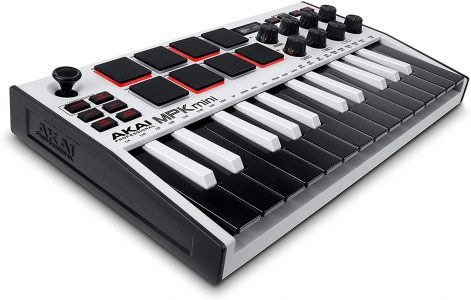

Of course, you can always reprogram these key switches as needed. So having more keys in this instance is nice. Many orchestral sampling instruments have key switches to affect articulation choices that are located at the very bottom of the full range. These can still send out the full range of MIDI notes, but you will need to adjust the octave switches on the devices to change the currently available range, so you will not have access to all the notes at once. Other common configurations are 61, 49 and 25 key devices. Of course, more is not always better if your space is limited. If you play fluently or even passably with two hands, or if you plan to trigger instrument libraries that require the full range like piano or orchestral ensembles, then 88 might be the right choice. How many you require is in part a function of your piano skills. The number of keys can range anywhere from a single octave to the full piano range of 88 keys. The Key questions (sorry for pun again … can’t help myself) are how many keys, what size, and what type of action. Bluetooth MIDI has also come on strong lately for smaller devices and iOS control. The MIDI THRU connection is not always present, but sometimes the OUT can be configured as a THRU via internal switching on the device. Modern keyboard controllers have USB MIDI connections and often MIDI DIN connections as well. It allows you to communicate pitch information either internally (if it has its own sounds) or to software or other hardware devices. The Keyboard is probably the most common type of MIDI controller for obvious reasons. I hope to clarify the main considerations in choosing a MIDI controller in this article so that the reader can avoid the pitfalls of over-buying or under-buying, both of which may cost you more money and create frustration down the line. are all important things to consider when choosing a controller. The devices and software that inhabit your studio or make up your rig, the type of audio production or music creation you’re engaged in, your needs for portability, your skills as an instrumentalist, etc. With the recent introduction of MIDI 2.0 and in particular, the new MPE (MIDI Polyphonic Expression) capability of a growing number of devices and software instruments, it is clear that MIDI as a means of inter-device and inter-application communication in music is a rock solid component that will be around for years to come. It was a good system that stood the test of time relatively unaltered. The THRU output allows messages received via MIDI IN to be sent through unchanged so that multiple devices can be daisy-chained.

The connections were made via DIN-style connectors with IN, OUT and THRU connections being typical. MIDI controllers have been around since the protocol was developed by Dave Smith and Ikutaru Kakehashi in the early 80’s ( source).


 0 kommentar(er)
0 kommentar(er)
